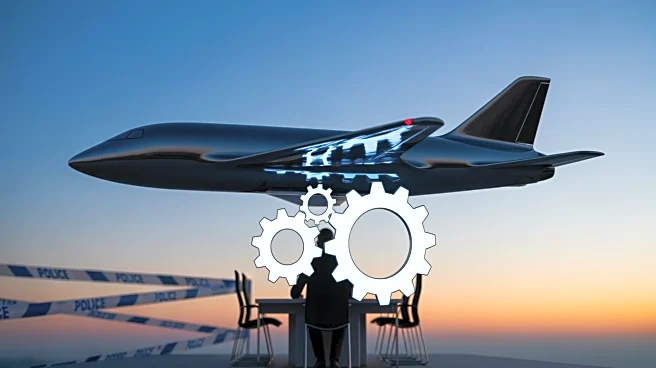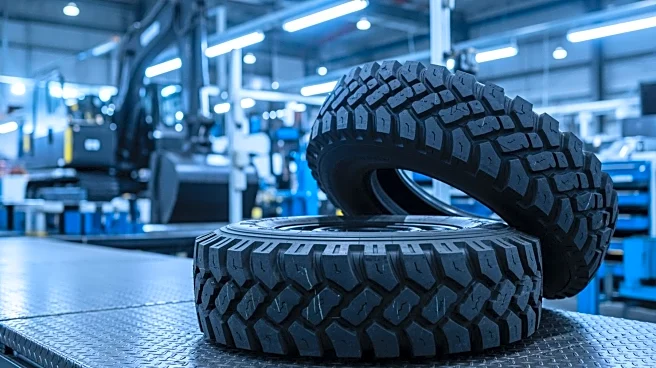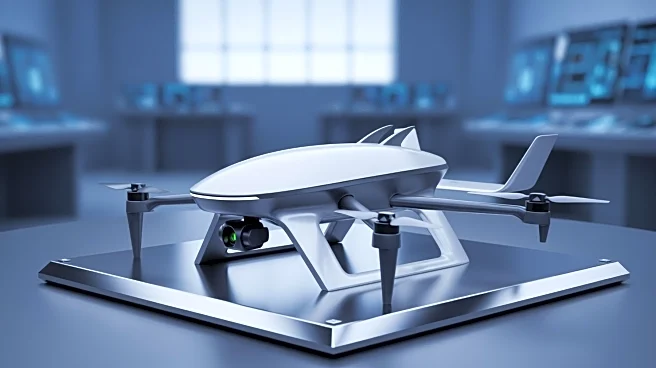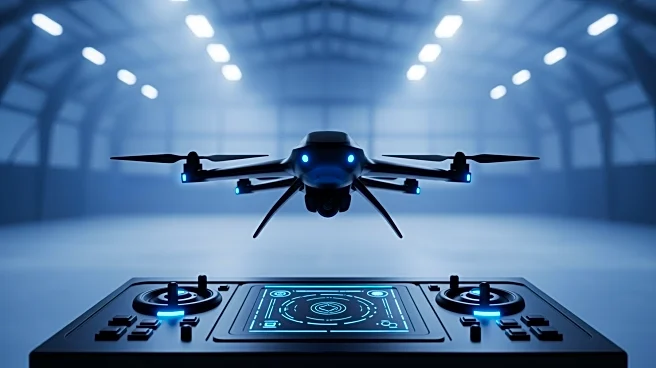What's Happening?
The BLACKJAX demonstrator, unveiled at DSEI 2025 in London, is set to test composite rubber tracks (CRTs) in early December. These tracks, used as a continuous rubber band reinforced with steel cords and high-strength
materials, offer an alternative to traditional steel tracks. The trial, led by AJAX systems requirements manager Lieutenant Colonel Charlie AJ Valdes-Scott, aims to assess the potential of CRTs as an upgrade for the British Army's AJAX armored fighting vehicles. General Dynamics Land Systems, the manufacturer, plans to deliver 589 vehicles, with CRTs integrated on the BLACKJAX technology demonstrator. Soucy Defense, based in Quebec, supplies the CRTs, and if successful, may need to provide economic incentives to the UK government under the Defence Industrial Strategy.
Why It's Important?
The testing of CRTs represents a significant advancement in military vehicle technology, offering improvements such as reduced noise and vibration, enhanced mobility, and weight savings. These benefits could lead to increased fuel efficiency and reduced maintenance issues, making CRTs a desirable upgrade for military fleets. The trial's success could influence future procurement decisions and impact the defense industry by setting new standards for armored vehicle design. Additionally, the integration of CRTs aligns with the UK's Defence Industrial Strategy, potentially fostering economic growth through job creation and technological innovation.
What's Next?
If the trial is successful, the British Army may decide to integrate CRTs into their fleet, prompting Soucy Defense to comply with the UK's offset policy by providing economic incentives. This could lead to increased collaboration between the UK and Canadian defense sectors. The outcome of the trial will be closely monitored by military and industry stakeholders, as it may set a precedent for future vehicle upgrades and influence global defense strategies.
Beyond the Headlines
The adoption of CRTs could have broader implications for military operations, potentially enhancing the stealth capabilities of armored vehicles due to reduced noise and vibration. This technological shift may also prompt ethical considerations regarding the environmental impact of manufacturing processes and the sustainability of materials used in defense equipment. Long-term, the success of CRTs could drive innovation in other sectors, encouraging the development of advanced materials for various applications.











